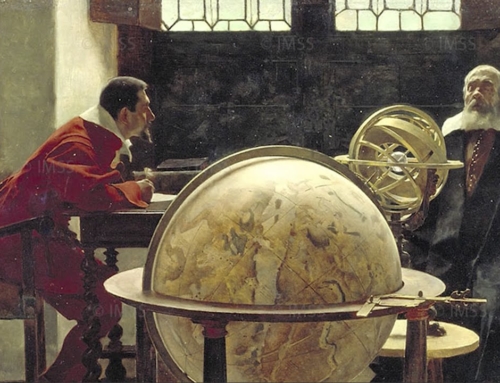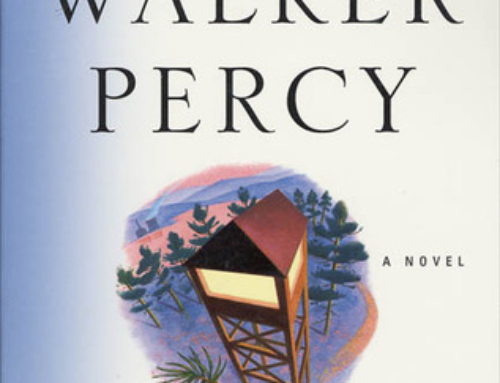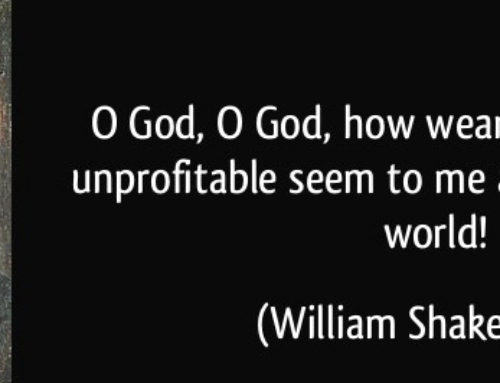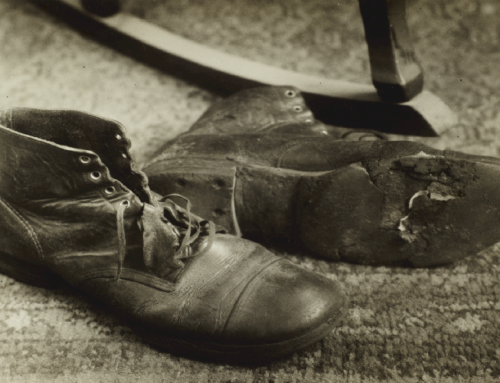 Three timely books are available which diagnose the problem of the American Church and the solution to the problem. Russell Shaw’s American Church – The Remarkable Rise, Meteoric Fall and Uncertain Future of Catholicism in America brilliantly presents the history of the problem and the present day crisis. In his usual easy going and personable style, Shaw re-tells the history of the Catholic Church in the United States. The Catholic Church had grown enormously through the 1800s as waves of immigrants arrived. By turn of the century the waves of Catholic immigrants were being assimilated into the United States. One of the towering figures of the establishment of the time was James Cardinal Gibbons. Friends with Teddy Roosevelt and every high ranking figure. He epitomized the easy drive for Catholicism to emerge as the predominant Christian entity in the burgeoning United States. Shaw charts the rise of Americanism–that heresy which blamed separation of church and state in the US as leading to a dangerous individualism, indifferentism and disregard for church authority. Two ways emerged within American catholicism: the liberal trend away from Rome and towards increasing acceptance of American values and principles and the conservative trend which was critical of American values in favor of total allegiance to the faith.
Three timely books are available which diagnose the problem of the American Church and the solution to the problem. Russell Shaw’s American Church – The Remarkable Rise, Meteoric Fall and Uncertain Future of Catholicism in America brilliantly presents the history of the problem and the present day crisis. In his usual easy going and personable style, Shaw re-tells the history of the Catholic Church in the United States. The Catholic Church had grown enormously through the 1800s as waves of immigrants arrived. By turn of the century the waves of Catholic immigrants were being assimilated into the United States. One of the towering figures of the establishment of the time was James Cardinal Gibbons. Friends with Teddy Roosevelt and every high ranking figure. He epitomized the easy drive for Catholicism to emerge as the predominant Christian entity in the burgeoning United States. Shaw charts the rise of Americanism–that heresy which blamed separation of church and state in the US as leading to a dangerous individualism, indifferentism and disregard for church authority. Two ways emerged within American catholicism: the liberal trend away from Rome and towards increasing acceptance of American values and principles and the conservative trend which was critical of American values in favor of total allegiance to the faith.
Shaw points out that the divide still exists within the American church. He quotes Catholic academic Jay Dolan who believes the Catholic faith fits in well with America and complements American values, then he counters with a quote from Cardinal George who says, “While the church in the United States enjoys a certain institutional freedom, she exists in a culture that, in often surprising ways, resists Catholicism.” Many would agree with the Catholic priest Shaw quotes who says, “There’s not a dime’s worth of difference between Catholics and their fellow Americans now in moral outlook or religious practice.”
The statistics are grim. Half of American Catholics voted for the most aggressively pro abortion presidential candidate the country has ever seen. On any given Sunday only 30% of American Catholic turn up for Mass. Three out of four Catholics go to confession only once a year if that. Numbers for church weddings, baptisms, confirmations and ordinations are all drastically down, down, down.
After re-telling the history of the church in America and the debates about the proper relationship of Catholics to their new country, Shaw tells how the immigrants moved out of the ghetto and were assimilated into the American mainstream. Through the rest of the twentieth century Catholics rushed to embrace every aspect of being American, and Shaw tells how, especially in the 1960s and 70s this led to widespread dissent. The battle was going to the side of the Americanists. The liberals weren’t going to take orders from Rome, and the American way seemed the best way. Shaw goes on to quote the statistics and make his point.
The point is that the American Catholic Church is more American than Catholic. American Catholics, having left their immigrant cultures behind have now woven their Catholic faith fully into the American experience. Visit the typical American Catholic parish and you will find not so much a universal, ancient and venerable religion–but a big auditorium with wall wall carpet, scary muzak more than sacred music, the homily is likely to be a bland mix of Oprah Winfrey self help advice and feel good sentimentality. In short, going to church in America is just another consumer experience designed to make you feel good about yourself and about America.
Shaw’s book is an excellent short, accessible and punchy history. He knows how to tell a good story without getting bogged down in pedantic details. He also analyzes the present situation with sharp criticism and pulls no punches in his conclusions. The book is big on assessing the problem, but disappointing when it comes to solutions. He speaks of the need for reform and the need for the Catholic Church to get its act together and do something, but he doesn’t seem too sure just what.
 George Weigel presents the solution. Its Evangelical Catholicism. His important book, Evangelical Catholicism–Deep Reform in the Twentieth Century Church tells us very clearly that the real problem is at the very heart of the American Church–that Catholics need to be converted. They need not just religion, but a change of heart, a total commitment to the gospel of Jesus Christ and a real relationship with the living Lord.
George Weigel presents the solution. Its Evangelical Catholicism. His important book, Evangelical Catholicism–Deep Reform in the Twentieth Century Church tells us very clearly that the real problem is at the very heart of the American Church–that Catholics need to be converted. They need not just religion, but a change of heart, a total commitment to the gospel of Jesus Christ and a real relationship with the living Lord.
Dedicated to our own Fr Jay Scott Newman–pastor of St Mary’s here in Greenville, George’s book is more theological than political. He traces the problems not just to Americanism, but to the dominance in Catholic self understanding of the Counter Reformation church. Weigel characterizes the counter Reformation church as being hierarchical and pyramidal in structure. The Pope was at the top and everything flowed downward from him. The church was rich in devotional practices, commitment to the sacraments, and thorough in catechesis. To put it bluntly, the church was run by the clergy. The saints were the heroes. The laity were like peasants–meant to pray, pay and obey.
Weigel rightly assesses that the time is right to move on. Evangelical Catholicism is from the ground up, not from the top down. The criteria is for individual sanctity, individual commitment to Christ and a profound encounter at the individual level with Jesus Christ the Lord and his message. Weigel then goes on and outlines what that reform looks like at the Episcopal level, the level of the priesthood, the liturgy, religious life, laity, the church’s intellectual life and the church’ involvement with public policy.
What I find so interesting about Weigel’s thesis is that many of his ideas were already the ideas and ideals of the 1960s modernists. His call for individual conversion and for the driving force in the church to be Spirit empowered individuals is the essence of the second Vatican Council. What happened after the council, however, is that the “Spirit of Vatican II” took over and the move away from the institutionalized, clericalized Counter Reformation church took us into the Protestantized, wall to wall carpeted, schmaltzy AmChurch we have today. This is because the call for individual conversion, for spirituality and the “encounter with Christ” was cut off from the traditions, doctrine and devotions of the church. The 1960s modernists took the easy way and mistook iconoclasm for reform. Instead of bringing about true conversion of heart and intentional disciples, they just found it easier to destroy the old rather than build something new.
The Radical reform Weigel calls for holds in one hand the need for individual conversion, radical discipleship, fervent work for the disadvantaged and holds in the other hand traditional liturgy, strong Biblical preaching, a strong and positive teaching on Catholic moral values, acute intellectual accomplishment and a re-vitalization of the Evangelization effort. Weigel is the author of the best biography of Bl. John Paul II and he clearly sees the JPII generation as the only vital and powerful way forward for the church. I agree.
Weigel’s explanation of Evangelical Catholicism shows it to be the only positive way for the American Church. If Weigel’s vision were fulfilled we would have a church that was strong and firm in its Catholic identity and witness, powerful and involved in the nation’s political debate and moral questions, leading in a renewal of liturgy, art, architecture and music, and taking a strong intellectual stance in the church’s educational establishments. The only alternative is the continued drift of the American church either into a bad Catholic version of the suburban mega church or a retreat into ultra traditionalism–which is a kind of sad admission of defeat and a retreat into a liturgical and cultural ghetto.
 Shaw shows the problem. Weigel expounds the solution from an intellectual perspective. Sherry Weddell takes the call for reform even further in her very important book, Forming Intentional Disciples–The Path to Knowing and Following Jesus. Weddell is the founder and director of the Catherine of Siena Institute. She and her colleagues have criss crossed the country leading parish retreats and seminars seeking to enliven the faith and “convert Catholics to Catholicism”. She is passionate about helping Catholics encounter Christ and she writes clearly and concisely about what that means and how to do it.
Shaw shows the problem. Weigel expounds the solution from an intellectual perspective. Sherry Weddell takes the call for reform even further in her very important book, Forming Intentional Disciples–The Path to Knowing and Following Jesus. Weddell is the founder and director of the Catherine of Siena Institute. She and her colleagues have criss crossed the country leading parish retreats and seminars seeking to enliven the faith and “convert Catholics to Catholicism”. She is passionate about helping Catholics encounter Christ and she writes clearly and concisely about what that means and how to do it.
Weddell echoes the grim data that Shaw and Weigel chronicle–falling Mass attendance, Catholics leaving the Church for Protestant churches, and a general “disengagement” from the life of the parish. She points out what I have experienced, that many Catholics leave not because they were leaving Christ, but because they became closer to him, but their fellow Catholics–including the clergy didn’t know what they were talking about or didn’t want to know.
She asks a question I have pondered time and again, “How many of the parishioners have truly met Christ and decided to follow him with their whole being?” These Catholics she calls “intentional disciples”, and she reckons that only about 5% of Catholics can be described as such. Even worse, many of the clergy, church leaders and administrators are among the 95% who are followers of Christ in this way.
Weddell gives the grim report from here experiences:
“As we listened to the spiritual experiences of tens of thousands of Catholics, we began to grasp that many, if not a majority of, Catholics don’t know what ‘normal’ Christianity looks like. I believe that one reason for this is the selective silence about the call to discipleship that pervades many parishes. Catholics have come to regard it as normal and deeply Catholic to not talk about the first journey – their relationship with God – except in confession or spiritual direction. This attitude is so pervasive in Catholic communities that we have started to call it the culture of ‘Don’t Ask, Don’t Tell.'”
Sherry explains a brilliant process by which a person has this encounter with Christ and a good part of the book explains this process and how to help individuals move through it. The ‘thresholds’ on the path to discipleship are:
1. Trust – in which a person comes to trust other Christians enough to engage in conversation about their spiritual life
2. Curiosity – a beginning open mindedness towards the possibility of faith
3. Openness – a genuine open heart and open mind
4. Seeking – genuine search for the truth
5. Intentional Discipleship – commitment.
Sherry says that this open conversation about the spiritual life and Christian commitment needs to be an expected part of our church life together.
“Until discipleship and conversion become a normative part of parish life, many [people] will walk in and out of our parishes untouched, and many Catholics who are disciples will continue to feel that they need to hide or minimize their newly awakened personal faith in front of other Catholics…The Catholic norm of silence about a relationship with God, about Jesus Christ and his story, about our own stories of following Christ, and about the need for everyone to decide whether or not he or she will follow as a disciple is stifling the emergence of a culture of discipleship and all that flows from it.
It is this “culture of discipleship” that Weigel would also endorse as the keystone to Evangelical Catholicism and one which Shaw would recognize as the key answer to the desperate problems of the American Church.
I cannot recommend this serendipitous trilogy of books enough. The three books have come on the scene at precisely the right time for the church. Along with the election of Pope Francis, the Spirit has led these three authors to produce books very much needed in the life of the Church.
Buy copies. Study them. Share them with your friends. I have read all three. The first two provide the necessary theory. The third I will read and re-read and share with my staff in order to set our priorities and get to work.






Leave A Comment
You must be logged in to post a comment.